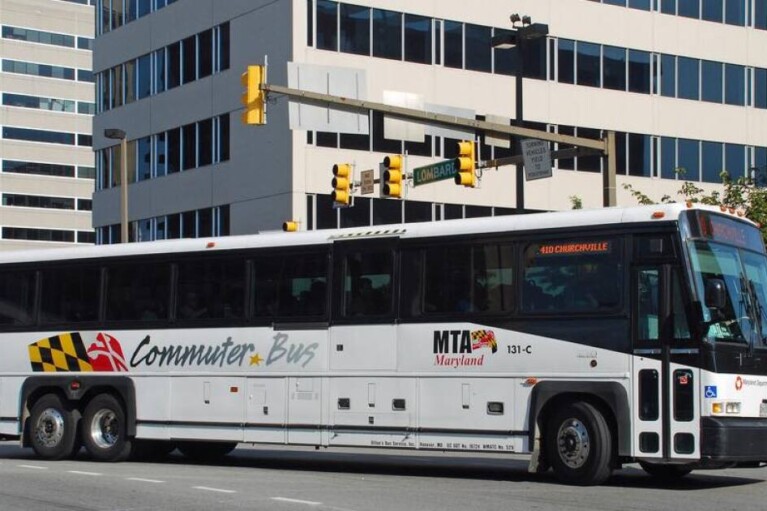Opinion: Maryland can, and must, do better at protecting the safety and health of workers

By Darryl Alexander, Debbie Berkowitz, Kate McPhaul, Robyn Robbins, Dave Rodwin, and Scott Schneider.
Alexander is retired director of Occupational Safety and Health for the American Federation of Teachers. Berkowitz is a practitioner fellow at Georgetown’s Kalmanovitz Initiative for Labor and the Working Poor. McPhaul is an associate research professor at the University of Maryland School of Public Health. Robbins is retired director of Occupational Safety and Health for United Food and Commercial Workers. Rodwin is lead attorney for the Workplace Justice Project at the Public Justice Center. Schneider is retired director of Occupational Safety and Health at the Laborers’ Health and Safety Fund of North America.
Maryland Occupational Safety and Health (MOSH) is in dire need of resources and reform. Nowhere is that more evident than the agency’s response to COVID-19. Countless numbers of healthcare workers and other essential workers were needlessly exposed, became sick and died because MOSH couldn’t launch an effective response to protect workers from exposures to the virus at work. There are other glaring examples of lapses in enforcement and standard setting over the last decade.
In July 1973, almost fifty years ago, the Federal Government initially approved the Maryland State Occupational Safety and Health Plan known as Maryland Occupational Safety and Health or MOSH. When the Federal Occupational Safety and Health Agency (OSHA) was created in 1970, States were given the option to create their own state OSHA plans, funded in part by the federal government. Maryland’s was one of the first. State OSHA plans are required to be “equally effective” as the federal program but can also be more protective.
This is especially important in worker health and safety standards setting. Federal OSHA standards set minimum safety and health requirements that employers are to follow. And because of Congressional requirements placed on OSHA in standards setting, it takes many years and even decades to regulate even serious hazards. For example, the OSHA standard for silica — a mineral common in construction that can be deadly if inhaled at unsafe levels — took about 20 years to finalize.
Several state plans, such as California and Washington, have taken actions over the years which make them “more effective” than the federal program. Maryland initially was a leader in protecting workers from safety and health hazards on the job. Maryland was the first to publish a standard to protect construction workers from lead, enacting the standard in 1984. It was also one of the first states to publish a standard to protect tree care workers. However, in more recent years, it has lagged in both standard setting and enforcement.
For example, Maryland was required to adopt this new silica rule within 6 months of the Federal OSHA rule being finalized. Three years later it has still not adopted the rule.
The inadequacy of the MOSH program disproportionately affects low-income workers and workers of color. A recent federal OSHA “Workers’ Voice Summit” heard testimony from Maryland workers. Miriam Doyle, a member of AFSCME Local 557, told of the dangers faced by workers at the state maximum security psychiatric hospital. One of her co-workers suffered fractures of his left eye, nerve damage to his leg and back as a result of violence at work. Several states have acted to protect workers from violence in the workplace. Maryland has not.
Most recently, MOSH was directed by the legislature to issue a standard to protect workers from excessive heat on the job, a growing problem as a result of climate change. But the proposed rule that was published in October is woefully inadequate and as written will not prevent workers from falling ill or dying from exposure to heat on the job.
Recent reviews of MOSH’s performance show inadequacies in its enforcement efforts as well. For example, federal OSHA increased penalty levels in 2016 as a result of Congressional action to have penalties rise with inflation, but Maryland has not raised maximum penalties over the past six years to reflect the federal action. The average penalty in the state for a serious violation (likely to cause death or physical harm) in 2021 was $862 compared with federal penalties of $3,315. For fatalities in the workplace, the average penalty in Maryland was only $2,051 compared with $11,626 federally. The agency is also significantly understaffed with (as of July 2021) only 34 safety inspectors and 10 1/2 health inspectors to cover 2.5 million workers across the entire state. This essentially signals to Maryland employers that MOSH will not be aggressively enforcing safe working conditions.
Maryland can, and must, do better. We should once again be a leader on workplace safety. The Moore administration has an opportunity to lead. A few things can be done right away:
- A commissioner of Labor needs to be appointed who has ties with the labor movement to place a strong emphasis on protecting workers.
- Maryland OSHA needs considerably more staffing. It is estimated that it would currently take Maryland OSHA 138 years to inspect every workplace in the state just once.
- Maryland needs to immediately come into compliance with federal rules and standards to become “equally effective” by adopting higher penalties and new federal OSHA standards.
- Maryland needs to set up a Standards Advisory Board as they have in California to expedite the issuance of new standards. New standards are urgently needed for hazards like workplace violence, heat, and injury and illness prevention plans.
- Maryland needs an active Advisory Board with more representation from labor and experts in the state. The board is supposed to meet four times a year and has only met once a year during the past five years and meetings have been perfunctory (1-2 hours) and not critical reviews of the Agency’s performance.
We have high hopes to turn this agency around with the appointment of Portia Wu as secretary of Labor. We look forward to seeing the appointment of a new commissioner of Labor and a dramatic reimagining of this essential agency.




 Creative Commons Attribution
Creative Commons Attribution